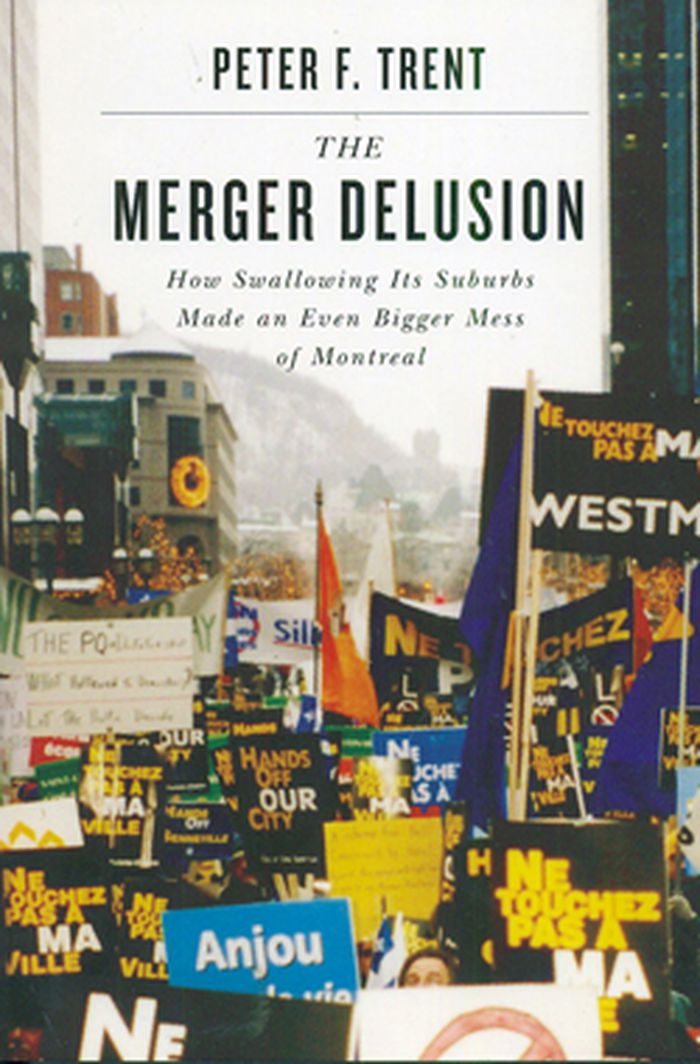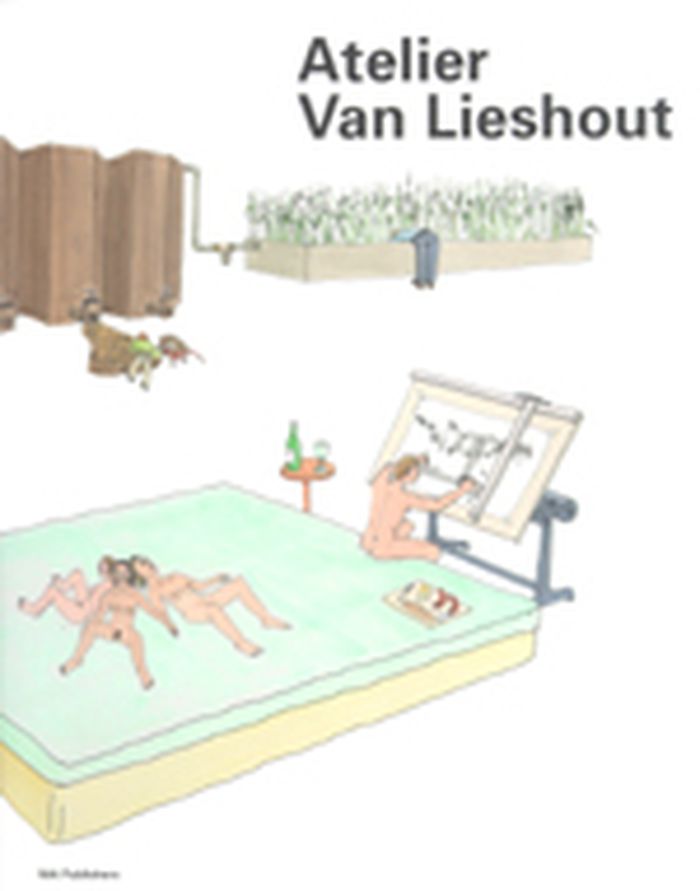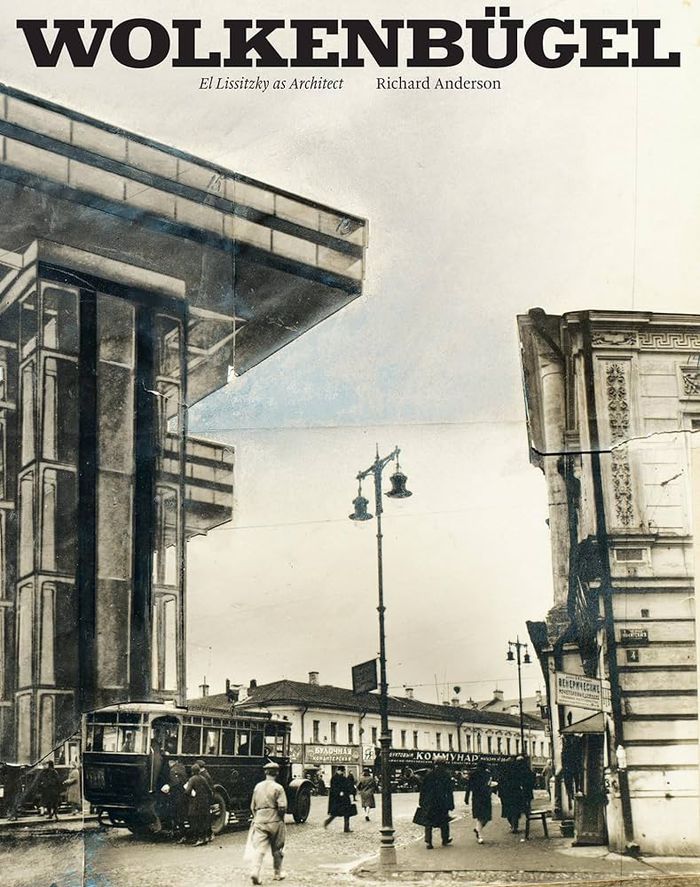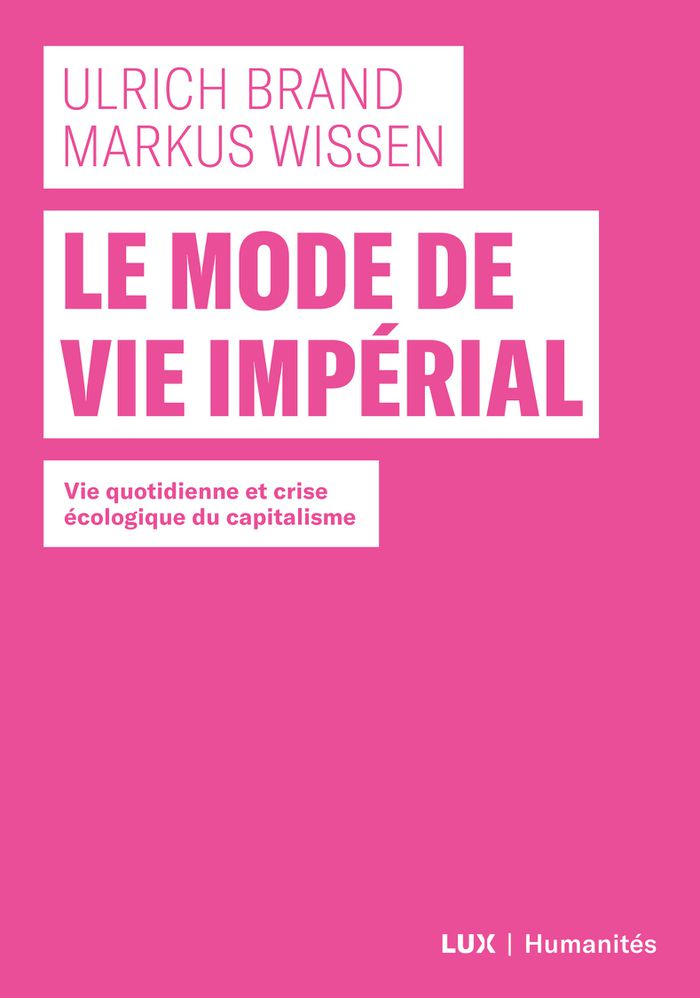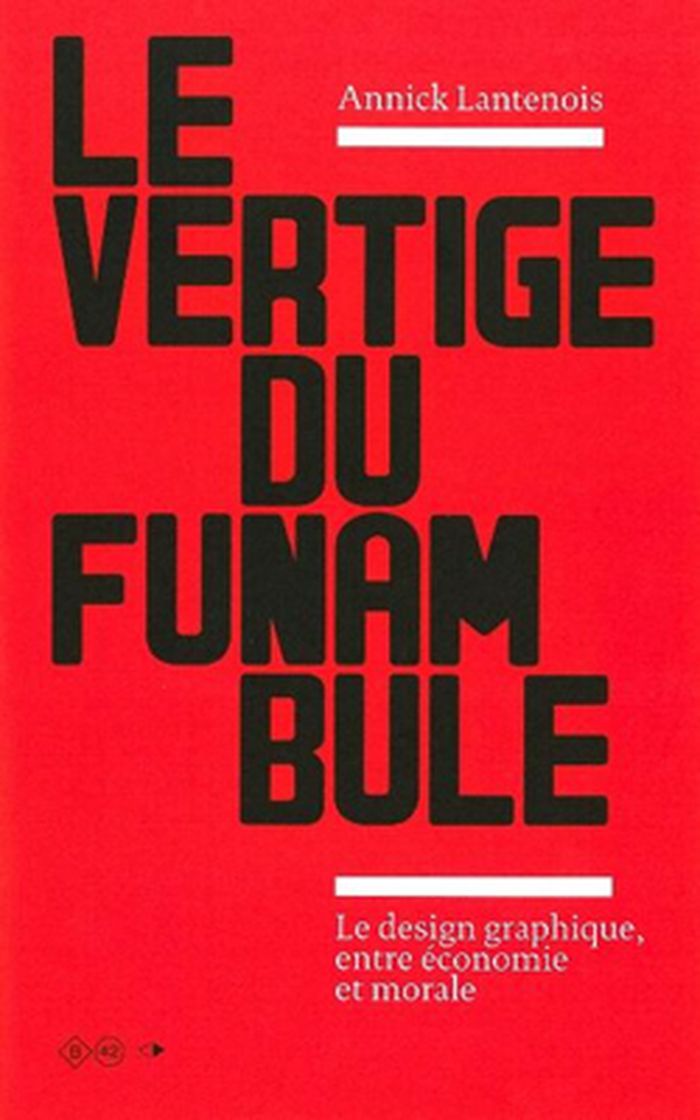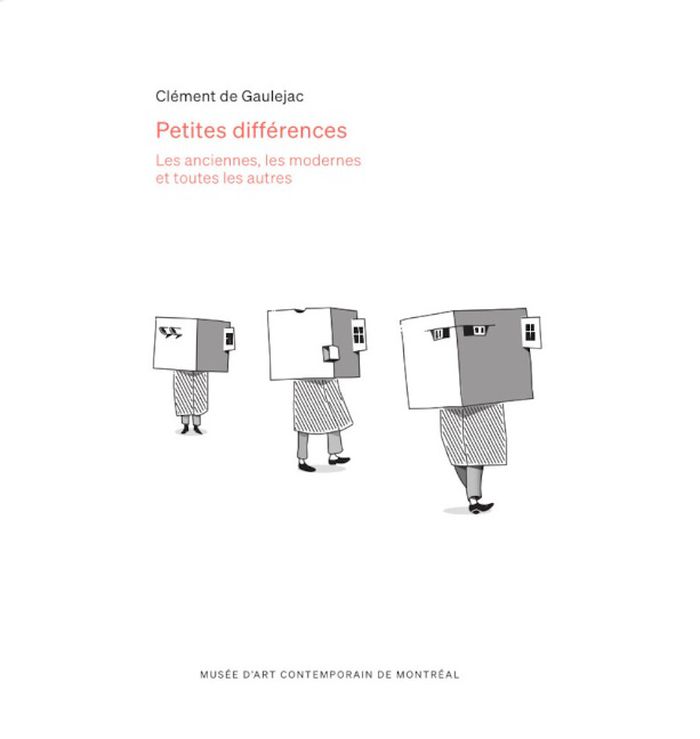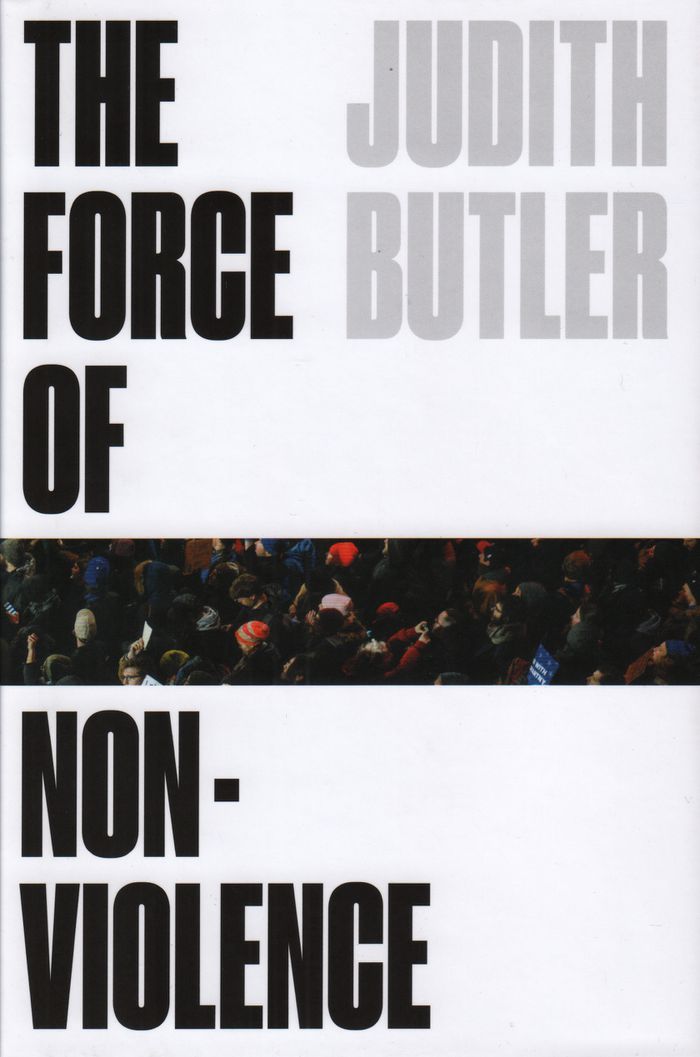$39.95
(disponible en magasin)
Résumé:
Powerless under the country's constitution, Canadian municipal governments often find themselves in conflict with their provincial masters. In 2002, the Province of Quebec forcibly merged all cities on the Island of Montreal into a single municipality - a decision that was partially reversed in 2006. The first book-length study of the series of mergers imposed by the(...)
Merger delusion : how swallowing its suburbs made an even bigger mess of Montreal
Actions:
Prix:
$39.95
(disponible en magasin)
Résumé:
Powerless under the country's constitution, Canadian municipal governments often find themselves in conflict with their provincial masters. In 2002, the Province of Quebec forcibly merged all cities on the Island of Montreal into a single municipality - a decision that was partially reversed in 2006. The first book-length study of the series of mergers imposed by the Parti Québécois government, The Merger Delusion is a critique by a key player in anti-merger politics. Peter Trent, mayor of the City of Westmount, Quebec, foresaw the numerous financial and institutional problems posed by amalgamating municipalities into megacities. Here, he presents a stirring and detailed account of the battle he led against the provincial government, the City of Montreal, the Board of Trade, and many of his former colleagues. Describing how he took the struggle all the way to the Supreme Court of Canada, Trent demonstrates the ways in which de-mergers resonated with voters and eventually helped the Quebec Liberal Party win the 2003 provincial election. As the cost and pitfalls of forced mergers become clearer in hindsight, The Merger Delusion recounts a compelling case study with broad implications for cities across the globe.
Architecture de Montréal
périodiques
Description:
1 online resource (volumes) : illustrations
Baden-Baden : Nomos
Verfassung und Recht in Übersee.
Actions:
Description:
1 online resource (volumes) : illustrations
périodiques
Baden-Baden : Nomos
Atelier Van Lieshout
$58.00
(disponible sur commande)
Résumé:
When Joep van Lieshout (b. 1963) founded the art and architecture studio that bears his name, he set in motion what has been described as "a new Dutch architectural style dirty, delicious and direct." Now Atelier Van Lieshout is 10, and the first major monograph devoted to it, A Manual (1997), has been sold out for years. This new overview brings readers into AVL's(...)
Atelier Van Lieshout
Actions:
Prix:
$58.00
(disponible sur commande)
Résumé:
When Joep van Lieshout (b. 1963) founded the art and architecture studio that bears his name, he set in motion what has been described as "a new Dutch architectural style dirty, delicious and direct." Now Atelier Van Lieshout is 10, and the first major monograph devoted to it, A Manual (1997), has been sold out for years. This new overview brings readers into AVL's contrarian applied art via luxuriously appointed "mobile homes," autonomous communes and surreal art projects, with equal time given to AVL-Ville (2001), a "free state" in Rotterdam's port, complete with its own flag, its own constitution and its own currency, and the revealing minutia of AVL's portfolio, from furniture to the "Bar Rectum," a perverse take on the Oscar-Meyer Weiner Mobile. The idea of art that can be used for a self-sufficient and independent lifestyle hits a uniquely high point in AVL-Ville, a culmination of all the work AVL has done before. And it lives on: After a successful and tumultuous year of work, AVL has recently located its first AVL-Ville export product in Park Middelheim in Antwerp: the AVL Franchise Unit. This richly illustrated survey tracks AVL's serious and often provocative portfolio through a crucial period in its growth and development.
$86.00
(disponible en magasin)
Résumé:
After achieving international acclaim as a painter and designer, El Lissitzky set out in 1924 to convince the world—and himself—that he was also an architect. He did this with a project for a "horizontal skyscraper," which he gave an obscure and untranslatable name: Wolkenbügel. Eight of these buildings, perched atop slender pillars, were intended to stand at major(...)
Wolkenbügel: El Lissitzky as architect
Actions:
Prix:
$86.00
(disponible en magasin)
Résumé:
After achieving international acclaim as a painter and designer, El Lissitzky set out in 1924 to convince the world—and himself—that he was also an architect. He did this with a project for a "horizontal skyscraper," which he gave an obscure and untranslatable name: Wolkenbügel. Eight of these buildings, perched atop slender pillars, were intended to stand at major intersections along Moscow's Boulevard Ring, integrating the flow of tramlines, subways, and elevators. In "Wolkenbügel", Richard Anderson explores Lissitzky's translation of visual and textual media into spatial ideas and offers an in-depth study of the surviving drawings and archival artifacts related to Lissitzky's most complex architectural proposal. This book offers a new and definitive account of how Lissitzky expanded the conceptual and representational tools available to the modern architect by drawing on many sources—including photography, typography, exhibition design, and even the elementary forms of the alphabet—to create the Wolkenbügel. Anderson shows how the production and reception of a paper project served to link key ideas and relationships that animated the worlds of art and architecture, offering a new view on received histories of the interwar avant-gardes. By attending to Lissitzky's singular architectural project, Anderson reveals the dynamics of internationality in the constitution of modern architectural culture in Europe.
Architecture, monographies
Le mode de vie impérial
$29.95
(disponible sur commande)
Résumé:
Dans le mode de vie impérial qui est le nôtre, à ce stade avancé du capitalisme marqué par l’impératif de la croissance, les moindres détails du quotidien, la construction de notre identité comme société et comme individus, tout repose sur la constitution d’un ailleurs où nos entreprises exploitent la force de travail comme elles ne peuvent le faire ici, et où nous(...)
Le mode de vie impérial
Actions:
Prix:
$29.95
(disponible sur commande)
Résumé:
Dans le mode de vie impérial qui est le nôtre, à ce stade avancé du capitalisme marqué par l’impératif de la croissance, les moindres détails du quotidien, la construction de notre identité comme société et comme individus, tout repose sur la constitution d’un ailleurs où nos entreprises exploitent la force de travail comme elles ne peuvent le faire ici, et où nous faisons disparaître nos déchets et fructifier nos surplus. Cette dynamique impériale est alimentée au quotidien par mille désirs anodins: l’acquisition d’un véhicule neuf grâce au crédit facile, la consommation de fruits et de légumes exotiques ou hors-saison, l’achat d’un ordinateur plus performant. Des habitudes qui ne sont plus l’apanage des pays dits «développés», mais que les pays non occidentaux adoptent aussi, accélérant et exacerbant à leur tour les inégalités et l’externalisation des conséquences écologiques et sociales de cette logique dévastatrice. L’humanité et la biosphère atteignent aujourd’hui leurs limites et ne pourront bientôt plus fournir l’ailleurs qui nous permet de maintenir ce train de vie à l’origine des crises écologique, économique et politique. Les tentatives de remédier à ces crises pour préserver ce mode de vie se multiplient, mais n’est-ce pas ce dernier qui pose justement problème?
Social
$34.95
(disponible sur commande)
Résumé:
This anthology by members of the Mohawk Warrior Society uncovers a hidden history and paints a bold portrait of the spectacular experience of Kanien'kehá:ka survival and self-defense. Providing extensive documentation, context, and analysis, the book features foundational writings by prolific visual artist and polemicist Louis Karoniaktajeh Hall (1918–1993)—such as his(...)
The Mohawk Warrior Society: auto-history of the Rotisken'rhakéhte
Actions:
Prix:
$34.95
(disponible sur commande)
Résumé:
This anthology by members of the Mohawk Warrior Society uncovers a hidden history and paints a bold portrait of the spectacular experience of Kanien'kehá:ka survival and self-defense. Providing extensive documentation, context, and analysis, the book features foundational writings by prolific visual artist and polemicist Louis Karoniaktajeh Hall (1918–1993)—such as his landmark 1979 pamphlet, The Warrior’s Handbook, as well as selections of his pioneering artwork. This book contains new oral history by key figures of the Rotisken'rhakéhte's revival in the 1970s, and tells the story of the Warriors’ famous flag, their armed occupation of Ganienkeh in 1974, and the role of their constitution, the Great Peace, in guiding their commitment to freedom and independence. We hear directly the story of how the Kanien'kehá:ka Longhouse became one the most militant resistance groups in North America, gaining international attention with the Oka Crisis of 1990. This auto-history of the Rotisken'rhakéhte is complemented by a Mohawk history timeline from colonization to the present, a glossary of Mohawk political philosophy, and a new map of Iroquoia in Mohawk language. At last, the Mohawk Warriors can tell their own story with their own voices, and to serve as an example and inspiration for future generations struggling against the environmental, cultural, and social devastation cast upon the modern world.
$30.00
(disponible sur commande)
Résumé:
Parce qu'il contribue à la mise en forme de contenus et à l'organisation des conditions de circulation des biens matériels et immatériels, le design graphique est toujours une recherche d'équilibre entre son instrumentalisation par les pouvoirs économiques, politiques et l'attitude critique des designers à l'égard de ces pouvoirs. Le vertige naît de la rupture de cet(...)
Le vertige du funambule : le design graphique, entre économie et morale
Actions:
Prix:
$30.00
(disponible sur commande)
Résumé:
Parce qu'il contribue à la mise en forme de contenus et à l'organisation des conditions de circulation des biens matériels et immatériels, le design graphique est toujours une recherche d'équilibre entre son instrumentalisation par les pouvoirs économiques, politiques et l'attitude critique des designers à l'égard de ces pouvoirs. Le vertige naît de la rupture de cet équilibre. Le capitalisme cognitif et l'industrie culturelle connaissent les compétences du design graphique. Assimilé à un emballage créateur de plus-value, il contribue à favoriser l'extension d'un formatage esthétique mondialisé. Faut-il renoncer à la fonction critique du designer ? Faut-il accepter de faire le deuil d'une capacité à accompagner les individus dans la lecture de la complexité? Au contraire, il s'agit d'interroger et d'actualiser cette fonction critique en investissant ce qui constitue aujourd'hui le terreau commun : la culture numérique. Un certain nombre de conditions doivent cependant être réunies : revenir à l'histoire du design graphique et au contexte de sa formation à la fin du XIXe siècle, réfléchir à son rapport à la technique et à son lien à la notion de "projet". Cette actualisation nécessite la constitution d'une culture qui intègre les nouvelles pratiques forgées par l'arrivée des nouvelles technologies, une pensée de cette technologie et de nouvelles méthodes d'analyse. Pour cela, faut-il que chaque acteur du design graphique accepte de sortir de son statut et de ses certitudes : s'aventurer dans l'inconnu.
Petites différences
$20.00
(disponible sur commande)
Résumé:
Les dessins légendés exposés en ces pages ont été élaborés tel un hommage aux nombreuses mains qui façonnent les Histoires de l’art. La formation des artistes, leur filiation historique, les collaborations plurielles, le travail de recherche, de création et de conservation, ainsi que les diverses institutions qui les soutiennent sont mis à l’œuvre dans le travail de(...)
Petites différences
Actions:
Prix:
$20.00
(disponible sur commande)
Résumé:
Les dessins légendés exposés en ces pages ont été élaborés tel un hommage aux nombreuses mains qui façonnent les Histoires de l’art. La formation des artistes, leur filiation historique, les collaborations plurielles, le travail de recherche, de création et de conservation, ainsi que les diverses institutions qui les soutiennent sont mis à l’œuvre dans le travail de Clément de Gaulejac. La création, aussi solitaire qu’elle puisse paraître, relève toujours d’un travail collectif. Comment s’organise la nécessaire solidarité entre artistes malgré les rivalités et l’asymétrie de relations parfois épineuses? Comment concilier l’individualisme de la création et la constitution de communautés interprétatives? Que se passe-t-il quand ces formations informelles se dotent de règles dont l’application ne pourra jamais être performée que par des individus? Composée de 38 dessins légendés faisant partie de la collection du Musée d’art contemporain de Montréal, cette œuvre conçue par l’artiste Clément de Gaulejac s’inscrit dans la continuité d’une série amorcée en 2011 avec Le livre noir de l’art conceptuel, poursuivie en 2012 avec Grande École, puis en 2017 avec Les artistes. Ce nouveau corpus prolonge sa réflexion sur les « règles de l’art », cet ensemble de lois qu’une actualisation permanente rend impossibles à énoncer, mais dont on sait pourtant qu’elles régissent le milieu de l’art. Bilingue, la publication comprend une documentation complète de l’œuvre accompagnée d’un texte de la conservatrice de la collection du musée, Marie-Eve Beaupré.
Théorie de l’art
périodiques
Der Staat.
Description:
1 online resource (volumes)
Berlin: Duncker & Humblot, 1962-
périodiques
Berlin: Duncker & Humblot, 1962-
$33.95
(disponible sur commande)
Résumé:
Judith Butler’s new book shows how an ethic of nonviolence must be connected to a broader political struggle for social equality. Further, it argues that nonviolence is often misunderstood as a passive practice that emanates from a calm region of the soul, or as an individualist ethical relation to existing forms of power. But, in fact, nonviolence is an ethical position(...)
The force of non violence: the ethical in the political
Actions:
Prix:
$33.95
(disponible sur commande)
Résumé:
Judith Butler’s new book shows how an ethic of nonviolence must be connected to a broader political struggle for social equality. Further, it argues that nonviolence is often misunderstood as a passive practice that emanates from a calm region of the soul, or as an individualist ethical relation to existing forms of power. But, in fact, nonviolence is an ethical position found in the midst of the political field. An aggressive form of nonviolence accepts that hostility is part of our psychic constitution, but values ambivalence as a way of checking the conversion of aggression into violence. One contemporary challenge to a politics of nonviolence points out that there is a difference of opinion on what counts as violence and nonviolence. The distinction between them can be mobilized in the service of ratifying the state’s monopoly on violence. Considering nonviolence as an ethical problem within a political philosophy requires a critique of individualism as well as an understanding of the psychosocial dimensions of violence. Butler draws upon Foucault, Fanon, Freud, and Benjamin to consider how the interdiction against violence fails to include lives regarded as ungrievable. By considering how “racial phantasms” inform justifications of state and administrative violence, Butler tracks how violence is often attributed to those who are most severely exposed to its lethal effects. The struggle for nonviolence is found in movements for social transformation that reframe the grievability of lives in light of social equality and whose ethical claims follow from an insight into the interdependency of life as the basis of social and political equality.
Social
